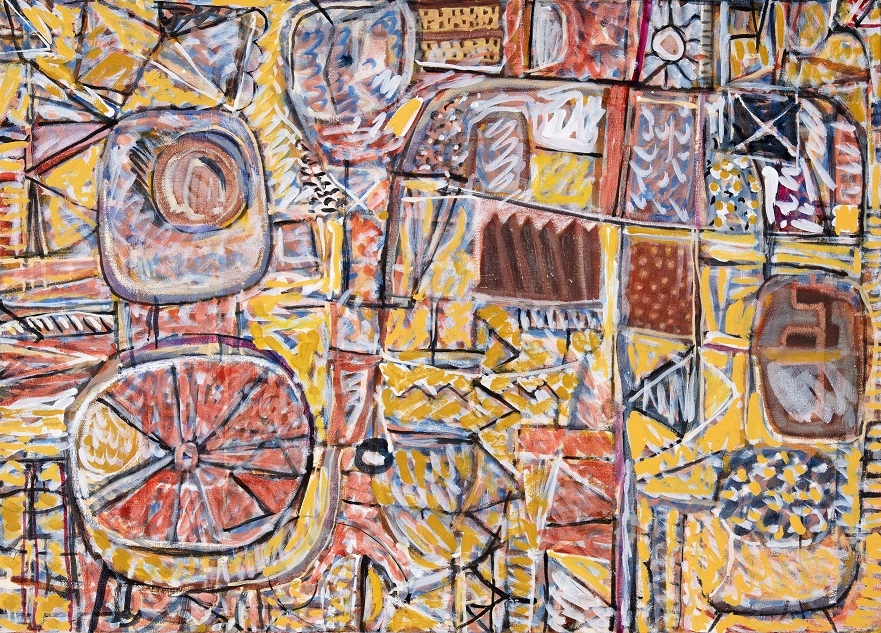Wayne Eager – Interview in Studio National
In News May 9, 2024

Above image: Wayne Eager, Allegory I 2023 oil on linen 95 x 133 cm
Wayne Eager was interviewed by Janet McKenzie for Studio International. Wayne Eager talks with Janet McKenzie about living in Central Australia with his partner, artist Marina Strocchi, working with Indigenous people to further their art, and witnessing a transformation in the art market’s view of Aboriginal work.
In 1990, Wayne and Marina travelled to Alice Springs in Central Australia for three months and were given introductions to a number of remote Aboriginal communities: Papunya, Kintore and Yuendumu. Subsequently, they moved to Central Australia in 1992, where the three-month project led to them making a major contribution to Aboriginal arts programs for almost 30 years.
Janet McKenzie: Can you recall your first encounter with Australian Aboriginal art?
Wayne Eager: I remember bark paintings at the old National Gallery of Victoria Museum, in Swanston Street, Melbourne. In 1968, the new NGV opened in St Kilda Road, and I often visited. I was always interested in the organic quality of the mark-making and the conviction of the storytelling on a two-dimensional surface. But it wasn’t until the desert “dot” paintings began to emerge that my interest intensified.
In 1982, Gabrielle Pizzi approached Roar Studios to exhibit a show of Western Desert paintings. Many of the artists were against her proposal, deeming it an exploitation of Aboriginal culture. A few of us stood up for the proposal on the grounds that it was a good thing to promote Aboriginal art and culture to the wider art world, as it had been relegated to a hidden history of anthropological relics for far too long. Her exhibition at Roar Studios was her first show of Aboriginal Art in a public space. She went on to open her own gallery in Melbourne, exhibiting a range of Aboriginal art from across Australia.
JMcK: What prompted your seven-month trip to Central Australia with David Larwill in 1990?
WE: An increase in exhibitions of Western desert painting in the wider world led to our growing interest. A friend, John Corker, who helped to set up Roar Studios in 1982, had moved to Alice Springs in 1983 to work with the Aboriginal Legal Aid service.
In Central Australia, I was mesmerised by the bright light and colour in the wide, open landscape. We visited the Papunya Tula Artists Gallery on an almost daily basis, travelled around country and visited various communities, before moving on north towards Darwin.
Read the full interview on the Studio International website.
